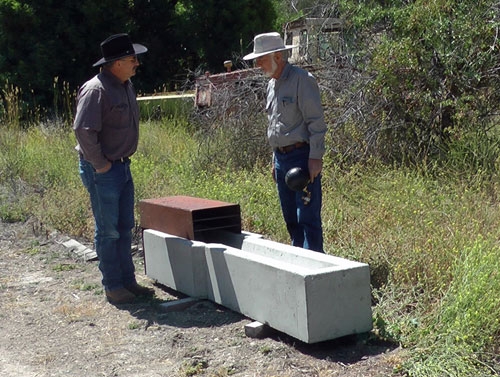Building a better water trough
“Water is the driver of nature.” - Leonardo da Vinci
California’s vast dry rangelands are dotted with water troughs ideal for quenching cattle’s thirst. But in most cases, the troughs’ designs are a torment to wildlife drawn for a drink.
Monterey County rancher George Work observed how traditional water troughs frustrated the wildlife on his family’s 12,000-acre cattle ranch. Small birds couldn’t reach water two or three inches below the top edge. Coyotes, bobcats and cottontails weren’t tall enough to reach over the rim. Work set to making a water trough that would meet the needs of all animals on the range – from cattle, hunting dogs and horses to deer and rabbits.
While raising cattle remains the primary function of the Work Ranch, in order to generate more income from the scenic open space the ranch opens its doors to hunting wild boar, quail and Tule elk. The visitors enjoy seeing a diversity of wildlife.
“One-third of our business comes from wildlife,” Work said.
In 1998, Work drew from decades of first-hand experience to design a better water trough. With a grant from USDA’s Natural Resources Conservation Service, he constructed a prototype. The concrete trough is sunk into the ground under an elderberry tree. Work modified a float like those used in toilet tanks to keep the water within centimeters of the rim.
That first man-made watering hole was an improvement for many species, but it also revealed some problems. Birds needed an escape ramp to climb out of the water should they fall in while drinking; the ramp should be shallow enough to allow the birds to bathe. Larger animals had to be kept from using the trough for a cooling dip. Work found that sloping the sides to a sharp V at the bottom of the trough made it unappealing for a soak.
Years of experimentation and innovation resulted in the development of pre-manufactured concrete water troughs, which are now commercially available. The next challenge is selling the idea to ranchers.
Enter UC Cooperative Extension. On an unrelated visit to the Work Ranch, UC Berkeley wildlife biologist Reg Barrett was impressed by Work’s invention and encouraged UC Cooperative Extension rangeland advisor Royce Larsen and NRCS rangeland conservationist Karl Striby to help spread the word.
Larsen and Stirby are now completing the first step, adding the ground-level water trough specifications to NRCS's published Technical Notes. The publication will provide ranchers and other land owners with the information they need to install the wildlife-friendly troughs.
“If you’re thinking of installing a basic, traditional trough for cattle, it may or may not be the best idea,” Larsen said. “But you’re thinking about supporting both cattle and wildlife, it’s great.”
In the video below, rancher George Work shows the ground-level water trough prototype and the second-generation, pre-manufactured version.
Groundlevel640


Diane Livia
SFPUC
415-554-1888
Posted by Diane Livia on November 16, 2015 at 9:47 AM